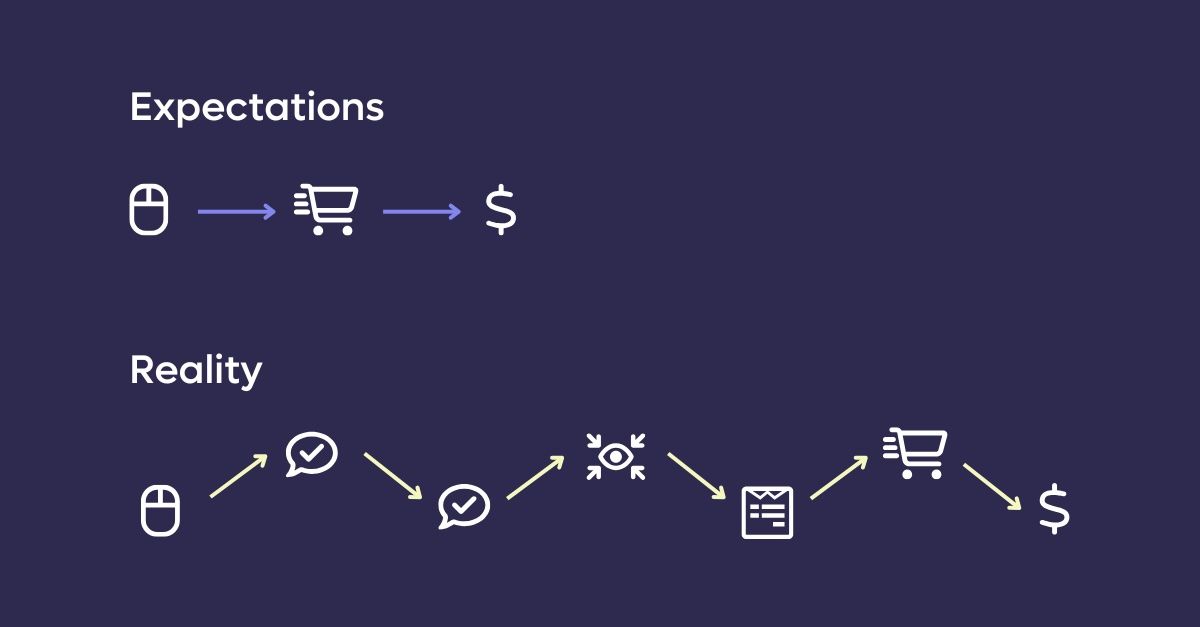How behavioral insights and 2 days of fixes lifted conversions for a footwear company
This case study uncovers the strategic transformation of a major player in the footwear industry where data-led quick wins transformed a seemingly hopeless situation. In the dynamic world of e-commerce, assumptions clashed with reality, and true insights paved the way for remarkable results.
2 days
to implement UX fixes

Challenge
The client was receiving steady website traffic but suffering from an alarmingly low conversion rate. They believed mobile users didn’t buy, multivendor marketplaces didn’t perform, and the only fix was to invest in retargeting and abandoned cart campaigns. But these were assumptions, not validated by behavioral data.
Goals
- Identify the real reasons behind low conversion rates Despite steady traffic, the website’s conversion rate remained low, especially on mobile. The team wanted to pinpoint the specific friction points in the user journey that were preventing purchases.
- Test assumptions about marketplace performance The client believed that multivendor marketplace traffic didn’t convert. One of their goals was to validate or disprove this assumption using behavioral data instead of relying on gut feeling.
- Make informed decisions before investing in campaigns Before launching retargeting or abandoned cart campaigns, the team aimed to understand whether those investments would actually address the underlying issues, or simply mask them.
Our approach
Investigating traffic vs conversion
While many metrics seemed favorable, the conversion rate posed a significant challenge. Despite substantial traffic and an acceptable bounce rate, a preliminary examination revealed that 55% of users accessed the platform via mobile devices. Furthermore, 90% of traffic came from marketplaces, which were wrongly blamed for low sales. A major issue was the exceptionally low conversion rate from mobile users.
Analyzing mobile behavior
By integrating the client's website with our analytical tool and focusing on mobile traffic, we uncovered a hidden world of user behavior. Nearly 25% of users zoomed in on content, which was a sign that something might be wrong. Initial user recordings revealed prolonged browsing times before reaching the desired product due to distractions, notably intrusive pop-ups. Shockingly, users spent up to a minute navigating to the "buy" button.
Mapping the real user path
Further analysis unveiled a complicated user journey:
Product view → close cookies notice → close newsletter pop-up → scroll past a large discount banner → Add to cart (finally!) → proceed to purchase

Thanks to the recordings, we saw that not everyone closed both pop-ups. Some closed only one and tried to scroll further, which made it even longer to get to the CTA (if they’ve reached it at all)! We also saw that the button to close the newsletter sign-up window was too small. It caused mobile phone users to repeatedly click around the button, zoomed in and, worst of all, get extremely frustrated.
Detecting frustration with rage clicks
Users were repeatedly tapping around unresponsive or hard-to-close elements. The rage click analysis clearly showed what was causing friction. Visitors arriving from the marketplace were highly intent-driven but were being blocked by unnecessary elements like loyalty offers, blog links, or banners.
Impact
Quick wins identified and delivered
We identified key quick wins - easy-to-implement solutions that directly address user needs:
- Eliminate extraneous content for marketplace visitors
- Focus users on the purchasing process
- Significantly minimize the steps needed for a purchase
Fast turnaround with minimal resources
By implementing these recommendations, our client invested just two days of designer and programmer work to transform their user journey — a stark contrast to the potential costs of launching a campaign to salvage abandoned carts.
Immediate improvements to conversion and satisfaction
The simplified user flow delivered immediate impact:
- Conversion rates surged
- Mobile users experienced a seamless purchasing process
- Frustration decreased significantly, leading to improved user satisfaction
Resources saved by avoiding campaign spending
This achievement not only saved substantial time and resources but also validated the concept of quick wins in optimizing user journeys. The decision to prioritize user experience over costly campaigns exemplifies the value of a user-centric approach in achieving tangible and cost-effective improvements in conversion rates.